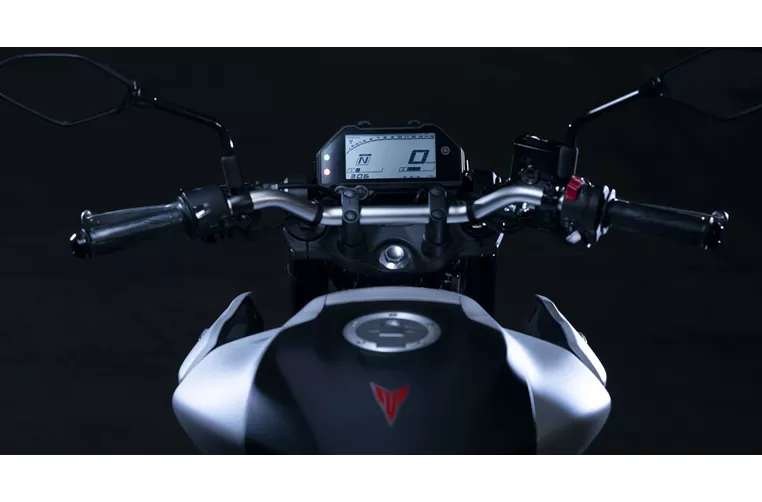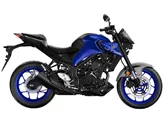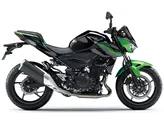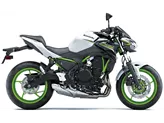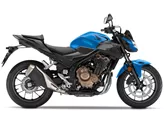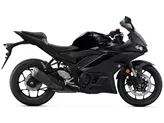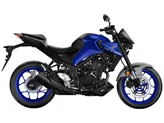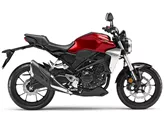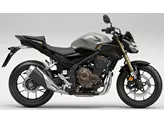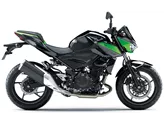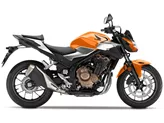Yamaha MT-03 2020 vs. Kawasaki Z 400 2019
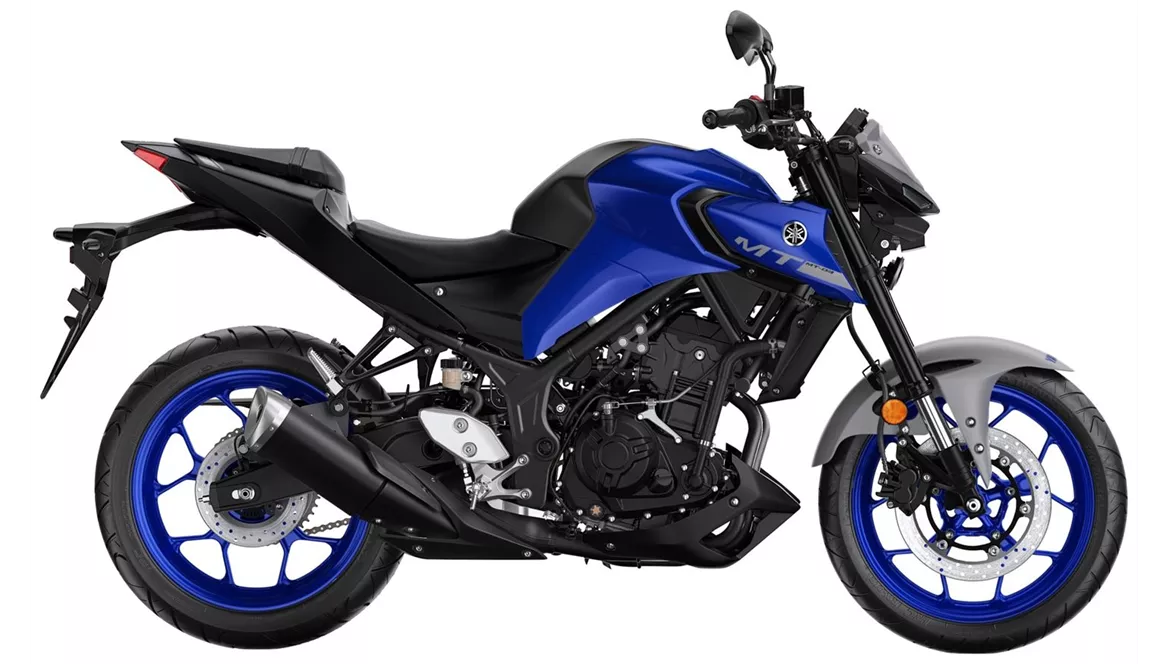
Yamaha MT-03 2020

Kawasaki Z 400 2019
Přehled - Yamaha MT-03 2020 vs Kawasaki Z 400 2019
The Yamaha MT-03 2020 and the Kawasaki Z 400 2019 are both naked bikes that offer a thrilling riding experience. While they have some similarities in terms of engine type, cooling, suspension, and frame, they also have distinct differences in terms of power, torque, weight, and dimensions.
In terms of engine power, the Kawasaki Z 400 2019 has a slight advantage with 45 HP compared to the Yamaha MT-03 2020's 42 HP. Similarly, the Kawasaki Z 400 2019 also has a higher torque of 38 Nm compared to the Yamaha MT-03 2020's 29.6 Nm. This means that the Kawasaki Z 400 2019 may offer a more powerful and responsive ride, especially for riders who enjoy a more aggressive riding style.
Both bikes have a 2-cylinder engine and liquid cooling, which ensures optimal performance and prevents overheating. The Yamaha MT-03 2020 has a displacement of 321 ccm, while the Kawasaki Z 400 2019 has a slightly larger displacement of 399 ccm. This may result in a slight difference in acceleration and top speed between the two bikes.
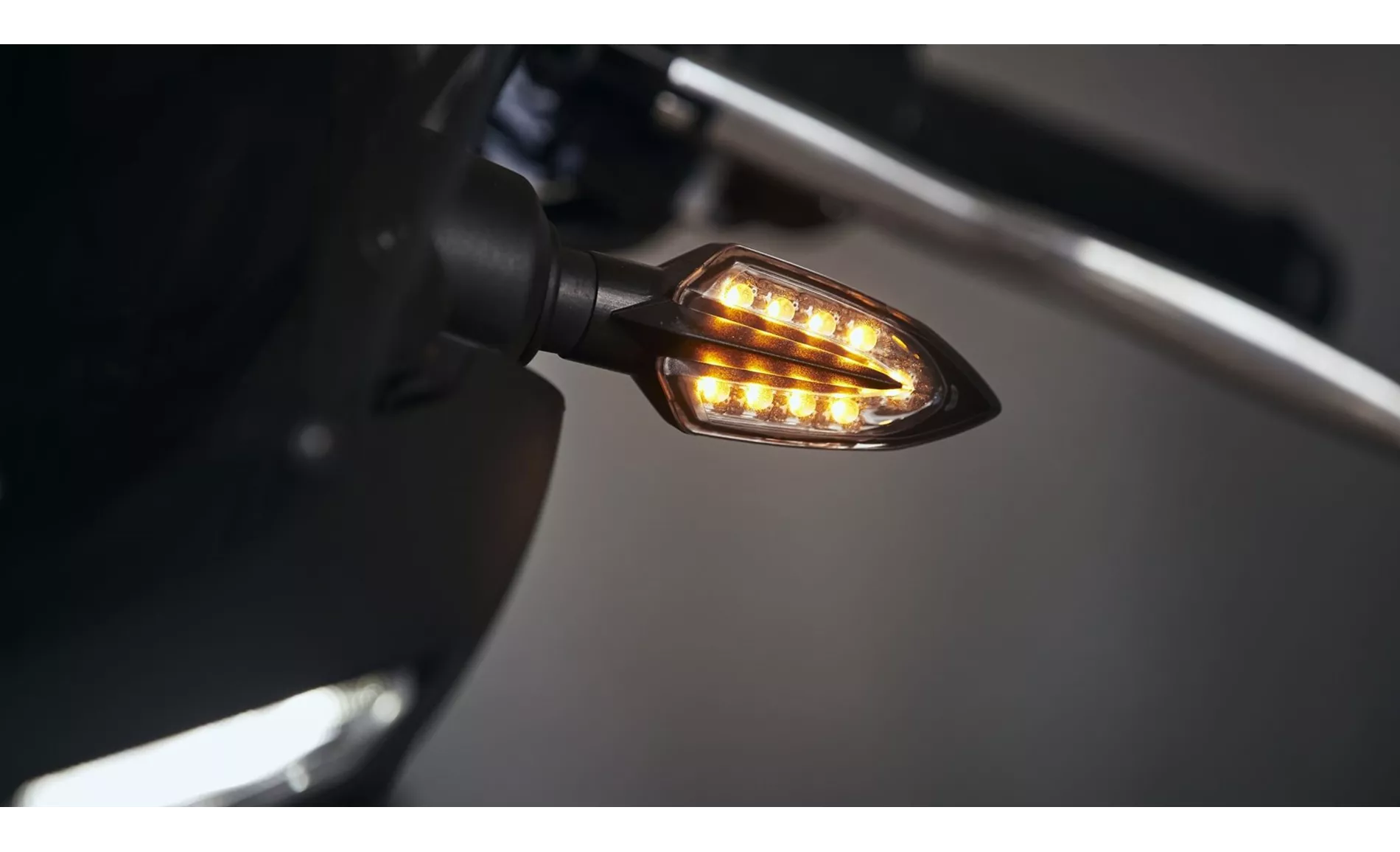
Yamaha MT-03 2020
Both bikes feature a telescopic fork front suspension and a swing arm rear suspension with a monoshock absorber. This setup provides a comfortable and stable ride, allowing riders to tackle various road conditions with ease. The chassis of both bikes is made of steel, ensuring durability and stability during high-speed rides. However, the Yamaha MT-03 2020 has a Twin Tube frame type, while the Kawasaki Z 400 2019 has a tubular frame type. This may result in slight differences in handling and maneuverability.
In terms of braking, both bikes feature a single disk front brake with a diameter of 298 mm for the Yamaha MT-03 2020 and 310 mm for the Kawasaki Z 400 2019. This ensures reliable and efficient stopping power, allowing riders to have full control over their bikes. Additionally, both bikes are equipped with ABS, providing an extra layer of safety and stability during braking.
When it comes to dimensions and weights, there are some minor differences between the two bikes. The Yamaha MT-03 2020 has a front tire width of 110 mm and a rear tire width of 140 mm, while the Kawasaki Z 400 2019 has a front tire width of 110 mm and a rear tire width of 150 mm. Both bikes have a 17-inch front and rear tire diameter, ensuring good traction and stability. The Yamaha MT-03 2020 has a wheelbase of 1380 mm, while the Kawasaki Z 400 2019 has a slightly shorter wheelbase of 1370 mm. The seat height of the Yamaha MT-03 2020 is 780 mm, while the Kawasaki Z 400 2019 has a slightly higher seat height of 785 mm. The kerb weight of both bikes is almost the same, with the Yamaha MT-03 2020 weighing 168 kg and the Kawasaki Z 400 2019 weighing 167 kg. Both bikes have a fuel tank capacity of 14 liters, allowing for decent range and fewer refueling stops.

Kawasaki Z 400 2019
In terms of strengths, the Yamaha MT-03 2020 offers easily controlled power, a low seat height, and easy handling, making it suitable for riders of all skill levels. It also has a neat and readable LCD display and an aggressive look, adding to its appeal. On the other hand, the Kawasaki Z 400 2019 boasts great and controllable power delivery, low weight, a good seating position, and a great sound. It is particularly well-suited for novice riders who are looking for a bike that is easy to handle and provides an exciting riding experience.
However, both bikes have their weaknesses as well. The Yamaha MT-03 2020 may have an acute knee angle for taller riders, and its chassis is softer compared to other Yamaha MT models, which may affect its overall performance. On the other hand, the Kawasaki Z 400 2019 has non-adjustable clutch and brake levers, which may limit the customization options for riders. Additionally, its chassis is limited in terms of adjustability, which may affect the overall riding experience for some riders.
In conclusion, the Yamaha MT-03 2020 and the Kawasaki Z 400 2019 are both excellent naked bikes that offer thrilling rides. While they have some similarities in terms of specifications, they also have distinct differences in terms of power, torque, weight, and dimensions. Riders should consider their individual preferences and riding style when choosing between these two bikes.
Technické údaje Yamaha MT-03 2020 ve srovnání s Kawasaki Z 400 2019
Výhody a nevýhody ve srovnání
Výhody a nevýhody ve srovnání
Yamaha MT-03 2020
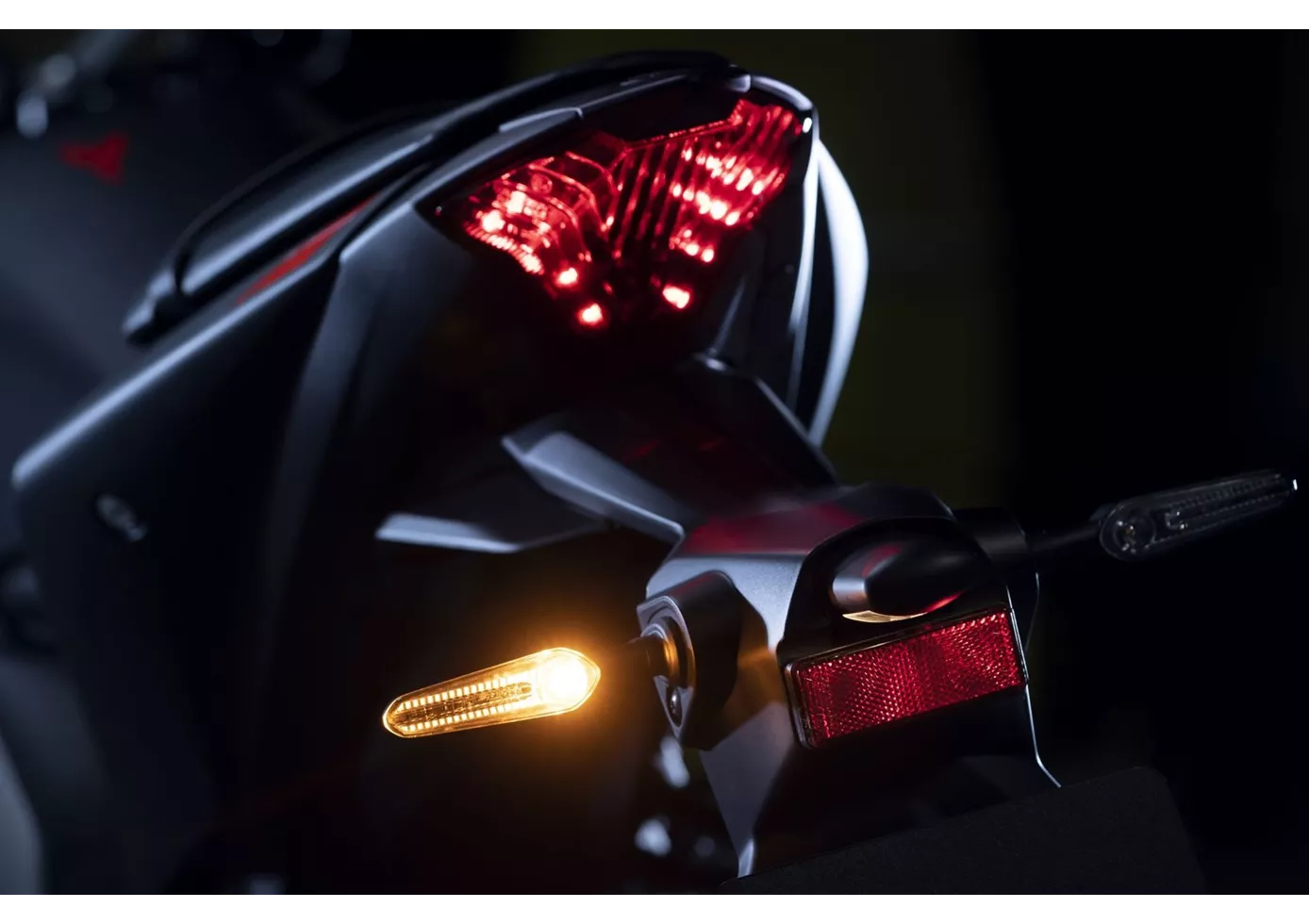
MT-03 zůstává nejdostupnějším a nejpragmatičtějším modelem Yamaha Hyper Naked v tomto segmentu. Boduje nízkou výškou sedla, snadno ovladatelným výkonem dvouválce a zároveň nabízí dostatek pohodlí pro dojíždějící. Co jí možná chybí na sportovním charakteru, vynahrazuje pohodlím, takže je ideální pro lidi, kteří hledají dobře fungující motorku s brutálním vzhledem. Neměl by však být příliš velký a neměl by aspirovat na to, aby držel krok s ostatními modely řady MT v úhlu - k tomu totiž nebyl určen. Modelový rok 2020 je tedy důslednou aktualizací, která své kupce jistě potěší.
Kawasaki Z 400 2019

Kawasaki Z400 je rozhodně skvělou evolucí svého předchůdce, modelu Z300. Více výkonu, nižší hmotnost - prostě ještě lepší motocykl. Především lineární průběh výkonu a vynikající ovladatelnost dělají z modelu Z400 ideální motocykl základní úrovně. V tomto duchu se nese i snadné ovládání spojky a dobré nastavení podvozku, a proto lze Z400 bez váhání doporučit začínajícím jezdcům.
Srovnání cen průměrná tržní cena Yamaha MT-03 vs Kawasaki Z 400
There are a few key differences between a Yamaha MT-03 2020 and a Kawasaki Z 400 2019. It takes less time to sell a Yamaha MT-03 with 82 days compared to 99 days for a Kawasaki Z 400. Since model year 2006 1000PS.de editors have written 8 reviews for the Yamaha MT-03 and 8 reviews for the Kawasaki Z 400 since model year 2019. The first review for the Yamaha MT-03 was published on 12/15/2005 and now has more than 109,900 views. This compares to more than 23,200 views for the first review on Kawasaki Z 400 published on 10/2/2018.
